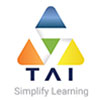This course provides information about managing a software-defined data center using the VMware Cloud Foundation™ unified SDDC platform. The course explains how Cloud Foundation helps in managing the physical and virtual infrastructure, managing users, configuring and deploying service offerings, and upgrading and monitoring the environment.
About VMware vCloud
Objectives
At the end of this course, you should be able to:
– Describe how Cloud Foundation deploys and manages an SDDC
– Identify the tasks that a system administrator performs in Cloud Foundation
– Describe how to manage users, roles, and permissions
– Describe how to manage physical and logical resources
– Explain how to configure and provision the environments and the workload domains
– Describe how to monitor alerts and health of the Cloud Foundation environment
– Explain how to configure the settings of VMware SDDC Manager
– Describe how to manage the lifecycle of the various software components of Cloud Foundation
Course Content
- Course Introduction
– Course Overview
– Course Objectives
– Course Outline
- VMware Cloud Foundation Overview
– SDDC Overview
– VMware Vision and Strategy for IT
– VMware SDDC Architecture
– Customer Challenges
– Cloud Foundation
– Deploying Cloud Foundation
– SDDC Manager
– Competitive Advantage of Cloud Foundation
– How Cloud Foundation Simplifies SDDC Phases
– Key Features and Capabilities
– Main Pillars of Cloud Foundation
– Benefits from Cloud Foundation
– Workload Domains
– Lifecycle Management
– Types of Use Cases
– Infrastructure Components of VI and VDI
- VMware Cloud Foundation Administration
– Cloud Foundation Private Cloud Overview
– Tasks of the System Administrator in Cloud Foundation
– Physical Topology of Cloud Foundation
– Management Domain
– Network Topology of Cloud Foundation
– VMware Software Components in Cloud Foundation
– Client Web Interfaces in Cloud Foundation
– SDDC Manager Overview
– Log Onto SDDC Manager
– SDDC Manager User Interface Overview
– Log Out of SDDC Manager
- Managing Users, Groups, and Physical Resources
– Managing Users and Groups
– Active Directory and Cloud Foundation
– Configuring an Active Directory Domain as an Identity Source
– Granting Permission to Active Directory Users and Groups
– Adding Local Users and Groups
– Assigning Permission to Users and Groups
– Role-Based Access Control
– Adding a System Administrator Role
– Passwords for Cloud Foundation Authentication
– Modifying the Password Policy
– Physical Resources in Cloud Foundation
– ESXi: Host Details and Operations
– Switch Details and Operations
– Using the Topology View
– Levels of Topology View
- Working with Workload Domains
– Workload Domain
– Capacity Deployment for a Workload Domain
– Management Domain
– Management Domain Architecture
– Types of Workload Domains
– Software Components for VI and VDI
– Creating a VI Workload Domain
– Virtual Machines in a VI Workload Domain
– VDI Environment
– Virtual Desktops – Installation and Authentication
– App Volumes and Active Directory Options
– Creating a VDI Workload Domain
– Expanding Workload Domains
– Deleting a Workload Domain
- Monitoring Your VMware Cloud Foundation Environment
– Monitoring Capabilities and Features of Cloud Foundation
– Events and Audit Events
– Types of Events
– Event Catalog
– Examining and Filtering Events and Audit Events
– Alerts
– Cloud Foundation System Alerts
– Examining, Filtering, and Clearing Alerts
– Workflows and Tasks
– Workflow and Task Details
– Using vRealize Log Insight Capabilities
– Accessing the vRealize Log Insight Web Interface
– Content Packs
– Using vRealize Operations Manager Capabilities
– vRealize Operations Manager Multiple-Node Cluster
– Accessing the vRealize Operations Manager Web Interface
– Management Packs
- Configuring Settings Using SDDC Manager
– Settings Configuration Using SDDC Manager
– Configuring the Uplink Connectivity Settings
– Customizing Default Values When Creating VDI Workload Domains
– VDI Infrastructure Settings
- Lifecycle Management of VMware Cloud Foundation
– Managing Lifecycle
– Lifecycle Management Virtual Machines
– Scheduling Updates
– Handling Dependencies
– Monitoring Updates
– Upgrading the SDDC Manager
– Demonstration: Automating Patches and Upgrades
Call Now- +91-921-276-0556


